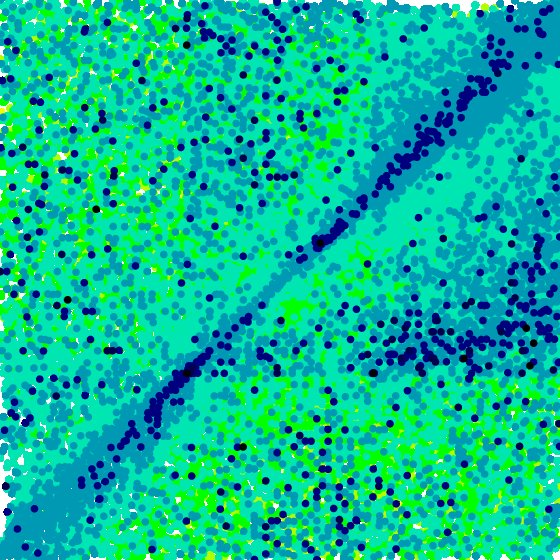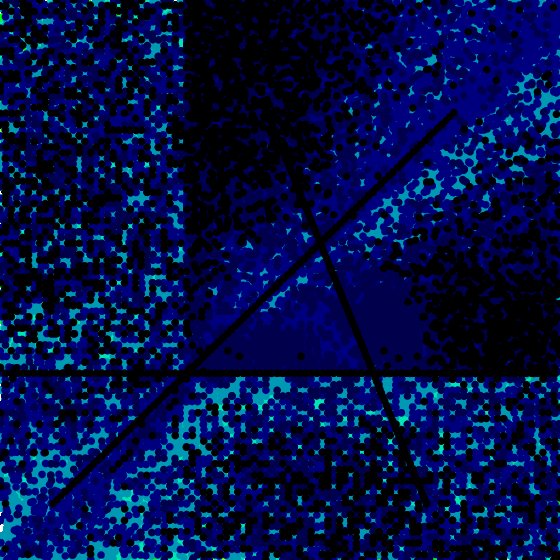3 by 3 by 4 Tensors¶
We now study the case of \(3\times 3 \times 4\) tensors.
Visualizations over the Real numbers¶
Since the maximum rank of \(3\times 3 \times 3\) tensors is 5, the maximum rank of \(3\times 3 \times 4\) tensors is at least 5 and at most 8. [C-B-L-C2009] (table 1) states (as know previously) that the typical rank is 5.
A Random Example¶
We choose \(T_1\), \(T_2\), and \(T_3\) randomly in \(S_3\). Since these three tensors are in \(S_3\), any tensor on the line connecting any two of them is in \(S_6\), and a tensor in the plane is generically in \(S_9\), which we is large enough to capture general \(3\times 3 \times 4\) tensors.
We first produce a visualization of \(S_5\) on \([-1,2]\times[-1,2]\), and obtain

[data file 3x3x4pr5random.dat] Next, using the same set of random \(T_1\), \(T_2\), and \(T_3\), we produce a visualization of \(S_6\), and obtain

[data file 3x3x4pr6random.dat] Initially the upper-right corner was generally lighter, so we added more points on \([0,2]\times[0,2]\), which explains the greater density in this region.
Based on these visualizations, we would conjecture that the maximum rank of \(3\times 3 \times 4\) tensors is probably 5, and at most 6. As noted above, [C-B-L-C2009] says it is known (proven) to be 5.